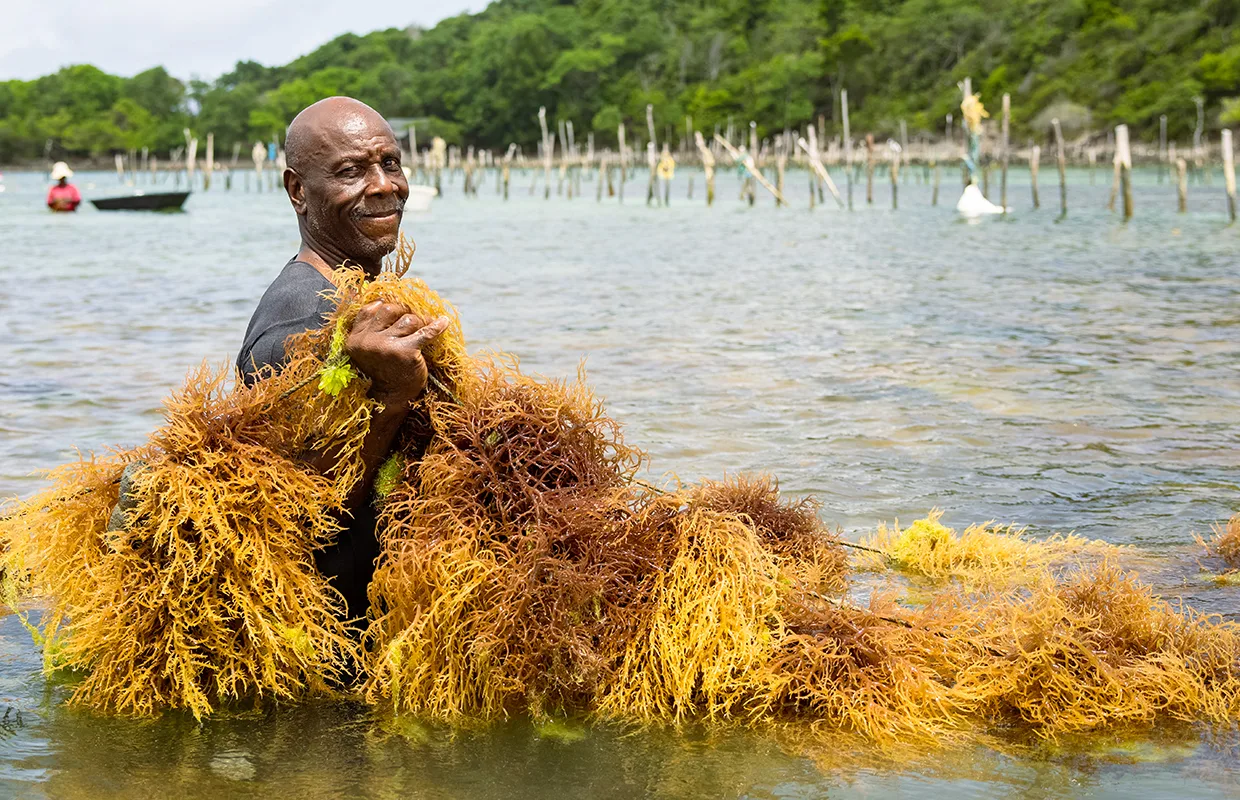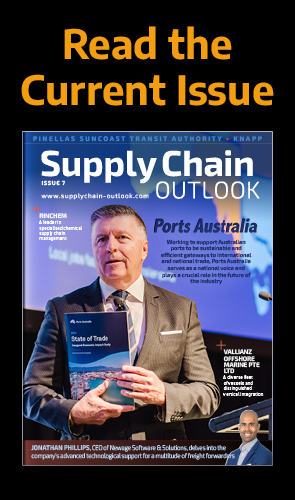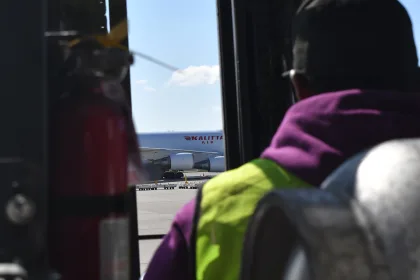Saint Lucia, once a leading exporter of bananas, is now diversifying its economy by focusing on high-quality cacao, rum production, and a growing manufacturing sector. Additionally, the country is capitalizing on the rising popularity of sea moss while navigating challenges and seeking new opportunities in the global market.
SPOTLIGHT ON ST LUCIA EXPORTS
The tropical island of Saint Lucia is an emerald jewel in the Caribbean Sea, where history, culture, and quiet charm converge to present a diverse export market, primarily driven by agriculture, manufacturing, and tourism-related products.
These industries play a pivotal role in bolstering the country’s economy, making substantial contributions to its national income. Among the most prominent export destinations are Guyana, the US, Barbados, Dominica, and Jamaica, each offering unique opportunities and fostering international trade relations.
Although not as dominant as agriculture, the manufacturing sector includes the production of clothing and textiles, which are primarily exported to the US and other Caribbean nations.
The island is also renowned for producing high-quality cacao, used in chocolate, as well as nutmeg and other spices, which are exported to various markets, particularly Europe. Additionally, it has a strong reputation for rum production, with several distilleries exporting different varieties of the popular spirit.
Tourism is a vital engine of economic growth, with its influence extending beyond local communities. This thriving industry fosters the creation of unique products often crafted by skilled artisans. As a result, these culturally rich items find their way into the export market, showcasing the region’s artistry.
Moreover, the festival industry not only highlights Saint Lucia’s rich cultural heritage but also, with a diverse line-up of events throughout the year, the vibrant scene plays a crucial role in promoting the island’s identity and attracting visitors from around the globe.
As the industry continues to grow, ongoing efforts are being made to enhance marketing and outreach, further tapping into international markets and making Saint Lucia a premier festival destination.
In recent years, the government has been working to diversify the economy and expand export opportunities beyond traditional sectors by promoting new industries and encouraging foreign investment. Furthermore, trade agreements with Caribbean partners and international markets are crucially shaping Saint Lucia’s export landscape.
However, the island faces challenges, including vulnerability to natural disasters and reliance on a limited range of export products. Ongoing efforts to enhance production quality and explore new markets are hoped to strengthen its export capabilities in the future.
Q&A WITH EXPORT ST LUCIA
Sunita Daniel, CEO of Export St Lucia, outlines the strategic initiatives in place to enhance export capabilities and foster entrepreneurial growth, aimed at diversifying the island’s economy, supporting local businesses in global markets, and promoting high-quality Saint Lucian products.
Firstly, could you talk us through the origins of Export Saint Lucia, its establishment, and the initial mission and vision?
Sunita Daniel, CEO (SD): Export Saint Lucia was created as the government’s dedicated export-promotion agency, operating as a statutory body under the Ministry of Commerce, Manufacturing, Business Development, Cooperatives, and Consumer Affairs. From the outset, the goal was clear – to diversify Saint Lucia’s economy beyond its traditional pillars, such as tourism and financial services, and to help local businesses compete and succeed on the global stage.
Our mission is to facilitate the growth of sustainable exports from Saint Lucia by providing targeted business support, reliable market intelligence, and strong promotional platforms. That mission has guided everything we do from preparing producers for export to connecting them with buyers overseas.

Our vision is to see Saint Lucia globally recognized as a source of high-quality, authentic, and sustainable products. We want our exports, whether it’s agro-processed goods, wellness items, or creative products, to reflect the richness of our island’s culture and values. We also want to create an environment where Saint Lucian entrepreneurs not only reach international markets but grow within them by embracing global standards in production, packaging, and ethical practices.
In practical terms, this means offering hands-on support, which includes capacity-building workshops, certification assistance, mentorship programs, and international exposure. We’ve taken local businesses to key trade shows across North America and Europe, introducing the Taste of Saint Lucia brand to help buyers immediately identify the quality and origin of our goods.
Since our inception, Export Saint Lucia has supported hundreds of small and medium-sized enterprises (SMEs), assisting them in entering markets in Miami, Toronto, New York, and London, among others, thereby opening new doors and expanding the country’s footprint in the global economy.
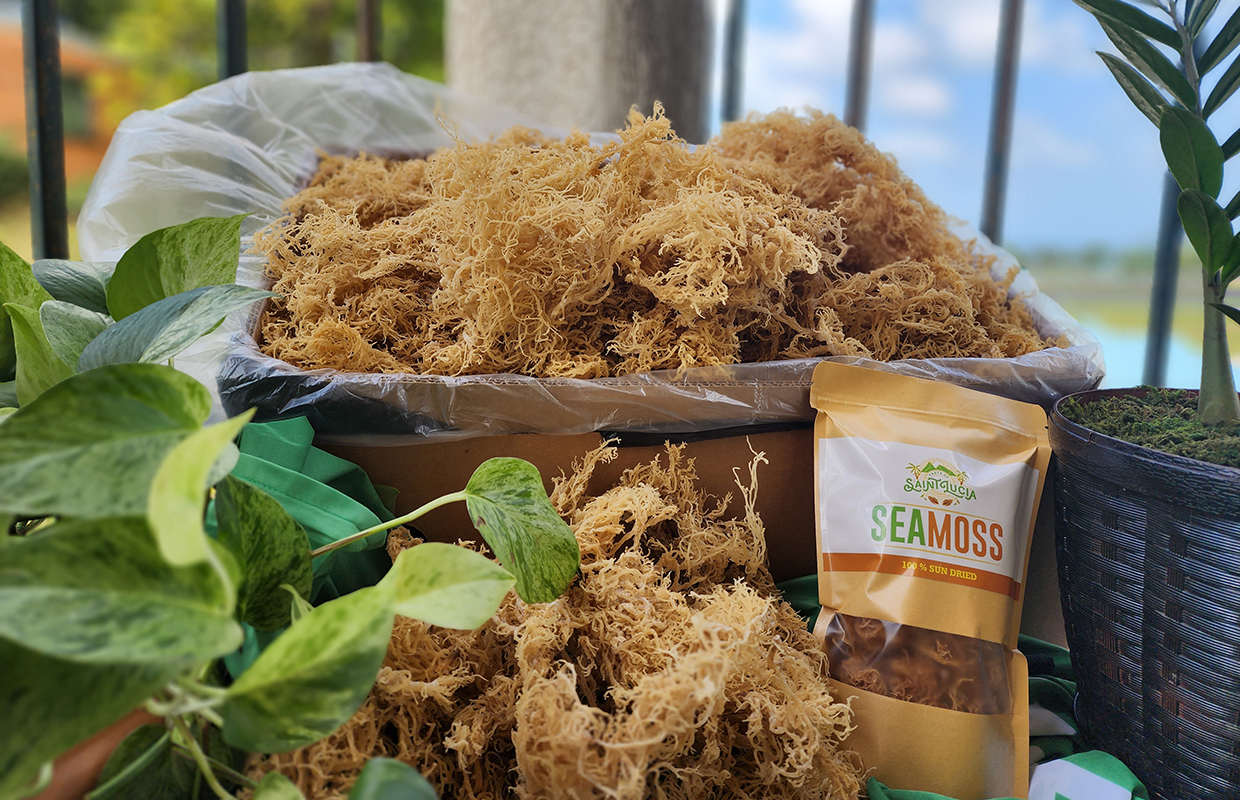
How has Export Saint Lucia developed and progressed? What objectives has it achieved since its inception?
SD: Export Saint Lucia has undergone a significant evolution. When we first started, our main goal was to lay the groundwork by building awareness, educate local businesses on export standards, and create the support systems necessary for them to access international markets. Over time, we’ve grown from a facilitator to a strategic driver of Saint Lucia’s export growth.
One of our proudest accomplishments is the rollout of the Taste of Saint Lucia brand. This initiative has provided a strong, recognizable identity for Saint Lucian products, making them more appealing and marketable to international audiences.
Another significant milestone has been our Packaging for Exports project, implemented in partnership with the International Trade Centre (ITC). Through this program, we delivered 21 innovative packaging and labeling solutions to micro, small, and medium-sized enterprises (MSMEs) across the island. This directly addressed one of the biggest barriers to export – presentation and compliance with market packaging standards, giving our producers a competitive edge.
The sea moss industry, however, is perhaps our most striking success story. Back in 2018, it generated only tens of thousands of dollars in export revenue. Today, it generates millions of dollars annually. That growth is no accident – it’s the result of direct intervention through our Sea Moss Development Programme. The socioeconomic impact of our intervention with the sea moss industry is far greater than the dollar value of the exports. Hundreds of jobs have been created in rural communities, with women being the group most widely impacted. We also did a program with at-risk youth, training young men at a juvenile facility in the practical and theoretical aspects of the industry.
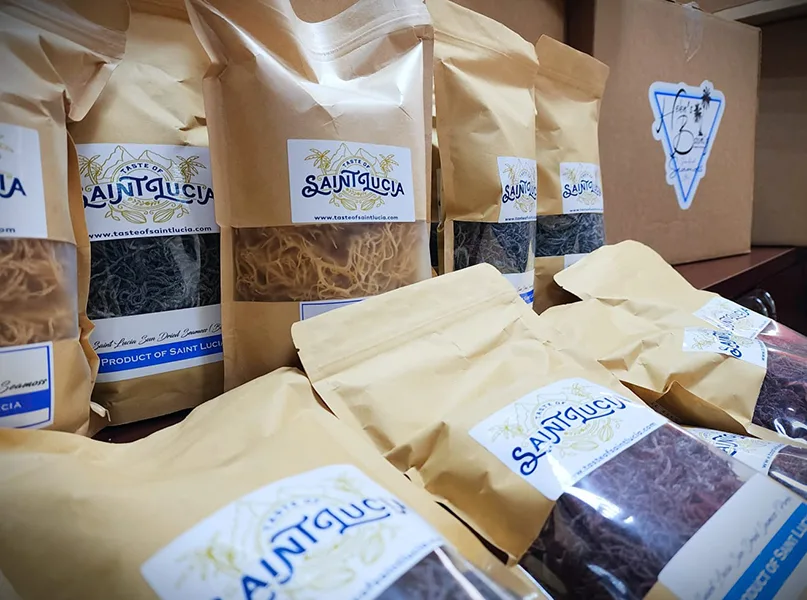
Saint Lucia sea moss has garnered global recognition, and our consumers regard it as the best in the world. We are in the early stages of acquiring a Geographical Indication (GI) to protect it and reassure consumers that any product bearing the Saint Lucia sea moss mark is of the highest quality, standard, and is authentically Saint Lucian. If successful with our bid, it will become our second GI.
Saint Lucia is renowned for its high-quality products, and our rums have won numerous international awards. In 2023, Saint Lucia Distillers was awarded a GI for Saint Lucian Rum. The attributes of the spirit were considered unique enough, coupled with the distillation and production process, and, of course, its quality, to secure the prestigious mark.
At the same time, Saint Lucia breadfruit has also been regarded as one of the best and is fiercely sought after by consumers in the US and UK. To ensure our consumers are purchasing authentic fruit from Saint Lucia, we have created a Lucian Breadfruit brand and trademark, which holds enormous potential as a climate-resilient, nutrient-dense export. By giving it a distinct Saint Lucian identity and pursuing legal protection, we are building a foundation for long-term value in both raw and processed forms of the product.
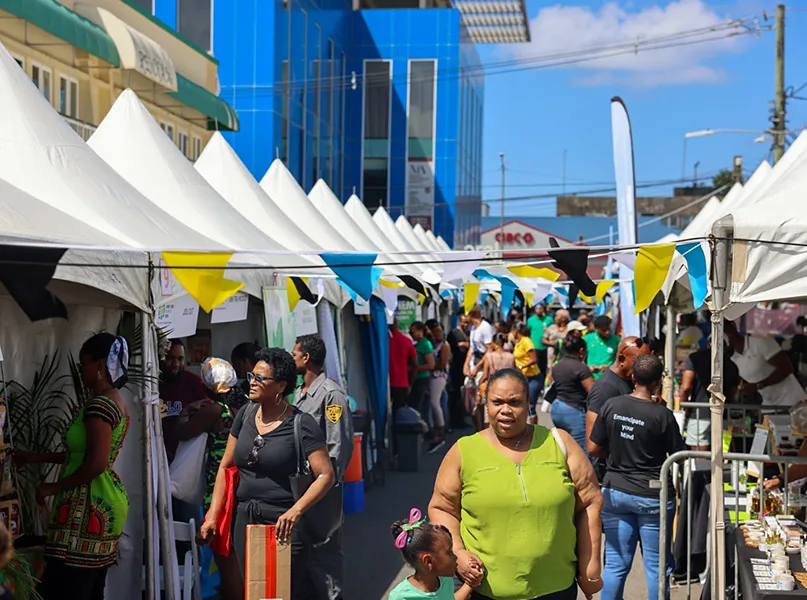
Could you discuss the cultural aspect of the island and how Export Saint Lucia enables musicians to penetrate international markets?
SD: Saint Lucia’s culture resonates with people. Nowhere is that more evident than with Lucian Carnival. Saint Lucia Carnival is an electrifying celebration of culture, color, and creativity, where pulsating soca rhythms, dazzling costumes, and contagious energy transform the island into a non-stop festival of freedom and expression. Held in July, it blends traditional Caribbean pageantry with a uniquely Saint Lucian flair, drawing revelers from across the globe to jump, wave, and dance in the heart of paradise. A critical element is the music, the heartbeat of the celebration, and it has become one of our strongest cultural exports.
On trade missions, we’re often struck by how far our music has traveled. Whether it’s hearing a Dennery Segment or one of our soca tunes pulsating through the airwaves at international events or meeting people who recognize Saint Lucia purely through our sound, it confirms that our culture has a global reach.
It was essential for us to ensure that our music maintained the same quality, standard, and global appeal as our products. As such, in 2024, we developed and introduced the Most Exportable Song award for Saint Lucia Carnival that recognizes a piece released during the season with the most international appeal, a song that resonates with carnival and music lovers globally – one that any reveler could sing at the top of their lungs and not compromise their sovereignty.
Imran Nerdy was our inaugural winner with his hit song ‘Start D Party’, which I encourage everyone to listen to. The winnings included a cash prize and additional marketing support for the artist. It’s part of our broader strategy to turn musical talent into international success stories. We are committed to continually growing this award to ensure that its legacy holistically builds the artist, song, sector, and, most importantly, the Saint Lucia Carnival.

In 2019, Export Saint Lucia launched the Business of Music developmental workshops, specifically for local artists. This focused on developing participants’ musical and business acumen, covering topics such as branding and marketing, performance preparation, and contract management. Our goal was to position them not just as performers, but as export-ready creative entrepreneurs.
We have also provided direct support for artists performing internationally. Saint Lucian music was a standout feature at the World Expo in Dubai and will be part of our cultural presentation at Expo Osaka 2025 in Japan, where our artists will headline National Day celebrations, introducing Saint Lucian culture and sound to patrons and viewers from all over the world.
In 2023, Export Saint Lucia facilitated the debut of our Dennery Segment genre at the Dominica World Creole Music Festival with two of our local talents, Umpa and Subance. Dennery Segment is a fast-paced, percussion-driven style of music that originated in Dennery, Saint Lucia. It is a fusion of soca, dancehall, and Afro-Caribbean rhythms featuring raw Creole lyrics and infectious beats, designed for high-energy dancing. Known for its bold, unfiltered sound, Dennery Segment has become a vibrant expression of Saint Lucian culture, gaining international attention while staying true to its grassroots origins. It is a favorite among our Caribbean Francophonie neighbours, with whom we share a bond through the Creole language and culture.
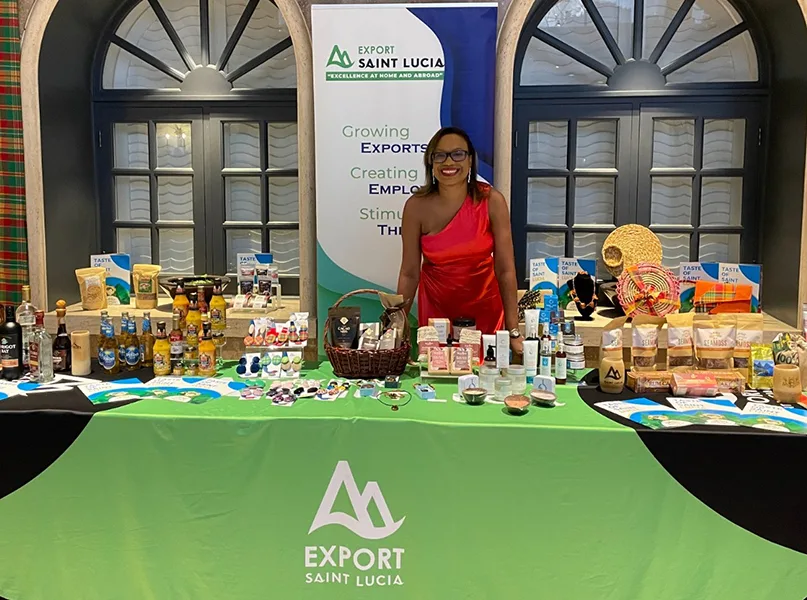
Additionally, how does Export Saint Lucia enhance the capacity of stakeholders in the agricultural sector? Following on, could you discuss the marketability of sea moss and its growth as an industry?
SD: That’s a timely question because over the past two years, we’ve been actively working on a project titled Enhancing the Capacity of Stakeholders in the Agriculture Sector. It’s more widely known as the CDB Packhouse Project, and it’s funded through the CARIFORUM-EU Economic Partnership Agreement (EPA), with support from the Caribbean Development Bank.
Under this initiative, we’ve delivered targeted training to farmers across the island in Good Agricultural Practices (GAP), as well as to packhouse operators and exporters in Good Manufacturing Practices (GMP) and Hazard Analysis and Critical Control Points (HACCP). They’re internationally recognized standards that help our producers meet the requirements of major export markets.
One of the project’s most significant milestones was the procurement and delivery of a refrigerated truck to our farmers in March 2025, facilitated by the Saint Lucia Marketing Board. That vehicle has been instrumental in maintaining cold-chain logistics, which is critical for preserving product quality during transport, mainly when exporting perishable produce to North American and European markets. Since its procurement, it has played an integral role in exports of agricultural produce to regional markets as well.
Looking ahead, still part of the project, we’re focused on upgrading three communal packhouses around the island. The goal is to ensure that they meet the highest standards for hygiene, food safety, and packaging so our agricultural exports remain competitive and respected abroad.
As for sea moss, there’s no doubt it’s become our agricultural powerhouse. It’s currently the most lucrative agricultural export from Saint Lucia, and demand continues to grow globally, especially in the health and wellness sector. However, with success comes responsibility – we must protect the integrity and identity of Saint Lucian sea moss.
To that end, the Government of Saint Lucia has invested heavily in the sector. We want to ensure that all our facilities and processes meet the international standards of our consumer markets. Saint Lucia has also rolled out a Sea Moss Export Certificate to ensure that only high-quality, traceable sea moss leaves our shores. Acquiring a GI would be another feather in the cap of high quality and authenticity.
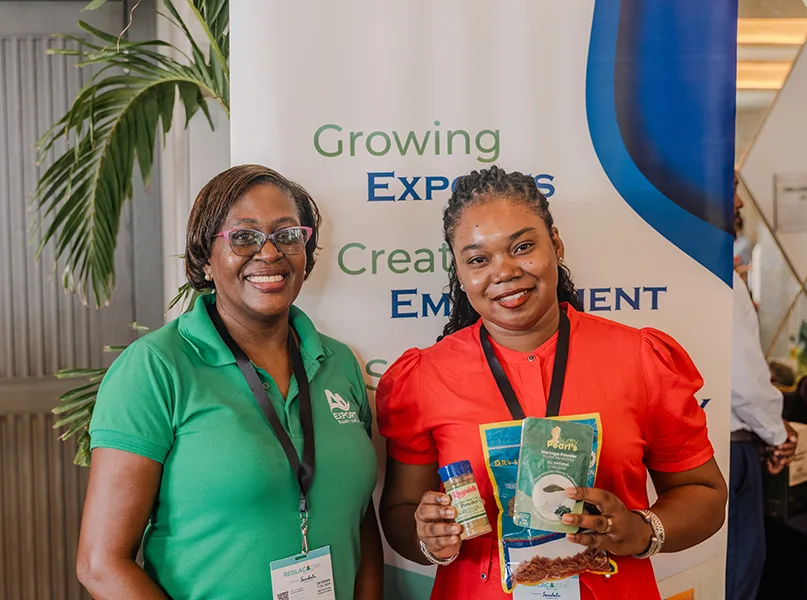
What do you find most exciting and challenging about the export industries in Saint Lucia?
SD: What excites me most about the export industry in Saint Lucia is the incredible potential of our homegrown products and the steady, inspiring growth we’ve seen among our MSMEs. There’s nothing more rewarding than watching a local entrepreneur who started at a village market evolve into a structured business, meet export standards, and then, with our support, facilitate their very first international shipment. That transformation – from local to global – is why we do what we do.
Another major highlight is the rise of Saint Lucian sea moss. It has quickly become our leading agricultural export, but what excites us even more is the opportunity for value-added products – everything from wellness gels to cosmetics and beverages. We’re actively working to ensure that the Saint Lucian sea moss brand is protected, standardized, and recognized globally for its premium quality.
There has also been an emergence of Saint Lucian coffee and chocolate, particularly from producers such as Noble Tree and rural women’s groups on the island, which have formed the Saint Lucia Network of Rural Women Producers (SLNRWP). They have begun carving out a name for themselves in specialty markets, and the potential for premium positioning is promising.
With that excitement comes a fair share of challenges. Infrastructure, logistics, and market access remain significant hurdles, particularly when handling perishable goods or maintaining the cold chain for agricultural exports.
There’s also the task of balancing rapid growth with sustainability. As demand increases, especially in sectors like sea moss, we have to ensure that our exports maintain high quality and that the Saint Lucian brand remains strong and trusted.
Ultimately, these challenges drive us; they force us to be strategic, collaborative, and forward-thinking.
Does Export Saint Lucia have any projects, events, or key initiatives you would like to highlight?
SD: Right now, we’re gearing up for Export the Runway 3, and we’re genuinely excited about what it represents. It’s our national stage for fashion – fusing design, music, and storytelling to showcase Saint Lucian talent with global potential. Every year, it gets bigger, bolder, and more refined. We’re creating space for our creatives to move from concept to commerce, where collections are positioned for real business opportunities.

We’re also proud to be representing Saint Lucia on the world stage through our participation at the World Expos. We’re leading Saint Lucia’s participation at Expo Osaka 2025, which is currently underway, and we’re already laying the groundwork for Expo 2027 in Belgrade.
These expos are massive opportunities. They provide us with a platform to promote not just tourism but also our full national identity – our culture, products, business ecosystem, and investment potential. We’re showcasing to the world that Saint Lucia has a great deal to offer.
Another key focus for us is the continued growth of the Taste of Saint Lucia brand. We’ve already opened our first international retail nook in London, which allows consumers to experience the best of Saint Lucian-made goods. We’re currently exploring similar expansions in North America to strengthen our footprint in that region.
Overall, we continually strive to discover innovative ways to help our businesses establish a presence in export markets – whether through cultural platforms, product development, or strategic international partnerships.

How do you see the export industry developing over the next five years? Are you optimistic about its future?
SD: I’m genuinely excited about where Saint Lucia’s export industry is headed. The past few years have shown us what’s possible when we give our businesses the right tools, guidance, and opportunities – and I think we’re only scratching the surface. Over the next five years, I see even more local products and services reaching international markets, especially as we continue to strengthen our support systems.
The strides we have made with sea moss and our hopes to diversify into more value-added products should bear fruit, so to speak. The addition of the GI, upgrading the processing facilities, and continued capacity building of farmers and exporters will make the sector more lucrative and resilient.
We’re seeing more MSMEs take themselves seriously as global brands. That’s a significant shift – not just in creating great products but also focusing on aspects like packaging, certification, and market fit. I think we’ll see a lot more value-added products emerging from Saint Lucia, particularly in agro-processing, wellness, and the creative sectors.
E-commerce is going to be a game changer. We’ve already seen how powerful digital tools can be in expanding reach and reducing costs. That’s why we’re in the process of developing a service export registry, so that Saint Lucian professionals, creatives, and service providers can be discovered and hired by clients worldwide. Whether it’s a graphic designer, a videographer, or a wellness coach, they’ll be able to offer their services globally through a structured platform, opening up a whole new layer of export potential. Of course, challenges remain – especially around logistics and shipping – but we’re making real progress there too. What gives me confidence is the mindset shift. Our producers are more informed, ambitious, and readier than ever to take their business beyond our shores. So yes, I’m optimistic because the talent is here, the products are here, and the world is starting to take notice.



